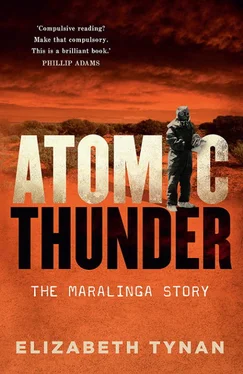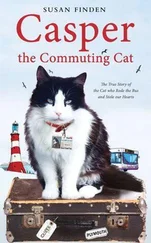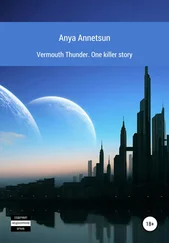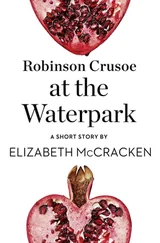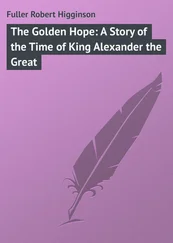The Royal Commission report damned the AWTSC again and again: ‘The AWTSC failed to carry out many of its tasks in a proper manner. At times it was deceitful and allowed unsafe firing to occur. It deviated from its charter by assuming responsibilities which properly belonged to the Australian Government’. Beale, however, used the AWTSC as armour in the constant battle to prove the tests were safe. He said in a 1956 media release at the time of Operation Buffalo: ‘There is, and always has been, complete unanimity of opinion between the British scientists under Sir William Penney and Australian scientists under Professor Martin as to standards of safety and conditions under which firing should take place’.
The saga of CSIRO scientist Hedley Marston best exemplified the AWTSC attitude to criticism. Marston was one of the few Australian scientists to raise questions about the British nuclear tests while they were underway. This pitted Titterton and Marston, both strong personalities, against each other. Marston was not a particularly pleasant individual, but his name has gone down honourably as the person who took on the AWTSC. The tale was well told in Roger Cross’ 2001 book Fallout: Hedley Marston and the British Bomb Tests in Australia . In essence, Titterton attempted to stop Marston publishing results that showed alarming levels of radio-active iodine in livestock. Extrapolating (perhaps too enthusiastically) from his findings, Marston asserted that dangerous radioactive fallout from both the Mosaic tests at Monte Bello and the Buffalo tests at Maralinga was blowing through countryside, towns and cities, entering the food chain via animals and from there reaching millions of unsuspecting people.
Marston was an agricultural scientist whose job was to determine the amount of radioactive iodine in the thyroids of sheep and cattle in the fallout area of the 1956 test programs. In fact, he took samples from way outside the originally agreed test area and showed that fallout was entering the bodies of animals in most parts of Australia, as far away as Townsville on the north Queensland coast. Marston did not test specifically for the more dangerous strontium-90, because in his view (contradicted in more recent years) iodine-131 was a marker for it. Marston argued that the national school milk program then operating in Australia seemingly guaranteed uptake of this deadly radioactive isotope, leaving children with lifelong radioactive material in their bones where it could potentially cause bone marrow cancers. Titterton disagreed vehemently with this interpretation. After Mosaic G2, the AWTSC had reassured Menzies that all contamination measured on the mainland was low and nothing to be concerned about. Marston’s measurements did not support this view.
The AWTSC tried to shut Marston down, placing pressure on the Australian Journal of Biological Sciences not to publish his article. Dr (later Sir) Frederick White, then chair of CSIRO, Marston’s employer, attended its 19th meeting on 11 June 1957, where an agreement was struck on censoring Marston’s article. This also happened to be the first meeting of the newly constituted AWTSC under Titterton’s leadership. White, effectively the meat in the sandwich, was provided with a string of demands from the AWTSC that included its clearing the final version of the paper and removing ‘personal attacks and unsubstantiated opinions’. The committee also insisted that several graphs containing data on gamma ray fallout be removed altogether, on Penney’s direct orders, although Marston was not to be told that Penney had insisted on this. When an abridged version of the article was published in August 1958, it was scarcely noticed, and Marston faded into the background.
The two biggest failings of the AWTSC were the huge but undisclosed yield of Mosaic G2 at Monte Bello in 1956 and the devastating plutonium contamination caused by Vixen B. At Hurricane and Totem, the Australian presence had been less than peripheral, and the lax safety at both series had the potential to cause significant political problems. The Australian Government wanted a proper mechanism to ensure a role in the subsequent tests. On 20 June 1955 Menzies agreed in principle to the British going back to Monte Bello for Mosaic, on the understanding that safety of people and animals in the vicinity of the tests would be ensured. The AWTSC was set up within a month, and the committee had precious little time to prepare for the biggest British test in Australia.
By now, test insiders knew the inadequacies of the safety preparations for Hurricane and Totem. Some of the many safety problems included the inability to predict fallout when the winds were strong, the effect of meteorological conditions generally on radioactive contamination and estimating the height of the mushroom cloud. The British meteorological expert Albert Matthewman prepared a report outlining these uncertainties. In evidence to the Royal Commission, Matthewman acknowledged that in many cases predictions did not match theoretical modelling. Much of the blame for this, he said, was the extreme difficulty in forecasting the wind: ‘Nine tenths of the explanation of the departures [from the modelling] were due to errors in the forecast of low level winds’. Clearly the safety foundations for nuclear testing in Australia were not strong, and it is hard to find evidence that safety was ever a top priority for the AWRE. Catching up with America and the USSR took precedence.
At its first meeting in July 1955, the AWTSC put on a show of strength. The new members agreed that neither the Mosaic tests scheduled for mid-1956 nor the Buffalo tests at the new permanent range due to take place in September 1956 should be given the go-ahead without proper information to better calculate the hazards. The committee held urgent meetings with AWRE visitors that same month, in an attempt to get on top of problems already evident in Mosaic and Buffalo. Monte Bello was known to be meteorologically difficult. In fact, the Hurricane test had been restricted to October, the only time when the weather was reasonably predictable. Yet Mosaic was to take place in May and June because the British were in a hurry to test the triggering mechanism for their new hydrogen bomb. At this time the prevailing westerly winds at Monte Bello were almost guaranteed to send the radio-active cloud across the mainland. But when the Churchill government decided to develop the hydrogen bomb in 1954, following the lead of both the US and the USSR, there was no time to waste. The British imperative to schedule the Mosaic series threw safety planning into panic mode.
Reports were prepared and experts consulted. By September 1955, the AWTSC knew that the meteorological conditions for the planned Mosaic firings were not likely to be safe. The problems intensified when a new report indicated that the seas were likely to be rough too. Members of the Seaman’s Union, which opposed the tests, were suspicious when the AWTSC asked its members to wear film badges to detect radiation. (Unfortunately film badges were rarely analysed. They were often worn and then discarded, without proper investigation of what they showed.) On 1 June Martin wrote to Beale to explain the rationale for this precaution:
The Safety Committee does not expect any dangerous fallout on ships and will in fact take all precautions necessary to ensure that there is none. The film badges are insisted on only because they will provide the best evidence to refute any allegation of the occurrence of high intensity fallout, that might be made either maliciously or from the misinterpretation, improper use or faulty operation of monitoring devices.
At its third meeting in November 1955, the AWTSC discussed the safe firing of the Mosaic tests, though it still did not have all relevant information. AWTSC members, all due at Monte Bello for the tests, left for the long trip to the northwest intending to meet there once the material was supplied. While these meetings are presumed to have taken place onboard the HMS Narvik , one of the British ships on site, no official minutes were kept.
Читать дальше
